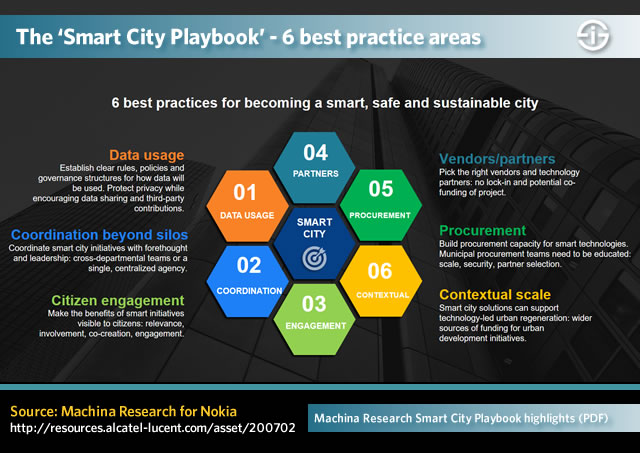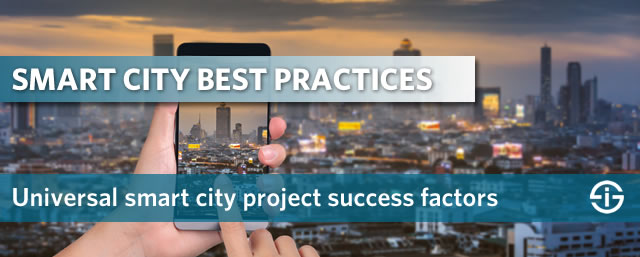We’ve previously covered how smart city projects are taking a prominent role in existing IoT projects and how the challenges to realize a true smart city require (open) data capabilities.
Visions for smart cities encompass far more than the Internet of Things alone. There are other technologies but there are also several challenges, regarding for instance, revenue streams, data, sustainability, prioritization, integration and – at least as important, the human essence. It was the core theme of the Smart City Expo World Congress 2016, organized in Barcelona in November 2016: “Cities for Citizens, Citizens Changing Cities”.
The latter does tend to be forgotten in a context where technology is heavily involved but everything stands or falls with the ecological, societal and human dimension of which social cohesion is an essential part. And of course we also need to take into account the feasibility of a broader smart city approach as no city is the same.
The emergence of new cities
You can hardly compare cities which are being built up from the ground (as has been happening and continues to happen) with cities where a smart vision is being deployed beyond the ad hoc perspective but lessons can be shared and smart city best practices defined and researched, taking into account various smart city ‘deployment models’.
In the coming decades several new cities and towns will pop up cross the globe. They won’t all be designed as smart cities from the very start or become one of the advanced smart city pilots such as China’s Yinchuan but it’s pretty clear that they will often come with a smart city vision in mind. And it won’t take until 2050 or so before new cities and towns emerge while others grow. At the beginning of 2017, for instance, Reuters reported that Britain plans to build 17 towns and villages to solve housing issues.
As we mentioned previously it’s also expected that by 2050 approximately 70 percent of the global population will live in cities, whereas today it’s little over half. And that will be felt in the citizen-centric digital transformation but also in the emergence of new cities and communities.
Common traits of successful smart city initiatives
What does it take to build a smart city? There are several approaches and no one size fits all. Still, both successful smart city projects and successful evolutions towards smart cities share some common traits, those smart city best practices.
End 2017, a report by Machina Research (acquired by Gartner), for Nokia, looked at the strategies of 22 smart cities, which led to the development of ‘The Smart City Playbook’, providing guidance to city leaders.
A look at the found smart city best practices as found for The Smart City Playbook
The research for the ‘Smart City Playbook’, among others emphasized the importance of open and transparent rules for the use of data. This is obviously important for the full smart city ecosystem: from government departments and agencies to third parties, regardless whether the data is shared freely in the scope of smart city initiatives or monetized.
Collaboration and openness are essential beyond the sheer data aspect, that much is clear. Yet, it’s equally clear that data isn’t just the bread and butter of the Internet of Things but also the glue and enabler of all recent technologies, new ecosystems and, most certainly, smart cities.
The ‘Smart City Playbook’ further identifies following smart city best practices which seem to be universal:
The avoidance of silos between various government departments (as we have them everywhere today) and thus, the other way around, the removal of such silos. Alignment and streamlining of initiatives, information streams and processes are as key in smart cities as they are in government transformation.
The accessibility, within the earlier mentioned transparency context and the scope of the various relationships, of ICT and IoT infrastructure to users inside and outside of government.

Collaborative citizen engagement initiatives by the public, government-sponsored and private partners such as vendors. This is beneficial as such and shouldn’t come as a surprise if we compare, for instance, with the role of employee engagement in business. It also shouldn’t come as a surprise that resident engagement is easier in projects in areas such as smart lighting and smart parking. In other words: in cases where citizen benefits are highest and clearest. You can also compare with the adoption of the Internet of Things by consumers: usefulness tops the list.
Scalability is another important smart city best practice. Smart city infrastructure needs to be scalable so it can meet future needs. This is exactly the same in serious Internet of Things deployments and many digital transformation initiatives and is or should be taken into account when technological choices are made.
Smart city infrastructure (and applications) also need to be secure and there needs to be an IoT security, compliance and governance policy to make sure that government and private data are protected. Again this should be a no-brainer but we all know it’s often not. Trust is key in any citizen and government initiative.
Last but not least we mention selecting the right technology partners, namely those that can help achieve all the above and offer the innovation capacity, ability to invest and real-world experience, along with the kind of open systems that seem preferred and avoid vendor lock-in is also key.
Our take on the latter: the creation of a good partner ecosystem is always important but in government and smart cities it’s even more so, given the sensitivity, complexity and mixed public and private environments whereby so many parties and government agencies need to be involved and citizen-oriented actions need to be taken (engagement and buy-in, security for trust, etc.)
More about the ‘smart city best practice’ research and ‘The Smart City Playbook’ in the press release and the executive summary (PDF opens).
The full ‘The Smart City Playbook’ by Machina Research at nokia.ly/smartcityplaybook (registration required).
Top image: Shutterstock – Copyright: harper kt – All other images are the property of their respective mentioned owners.


